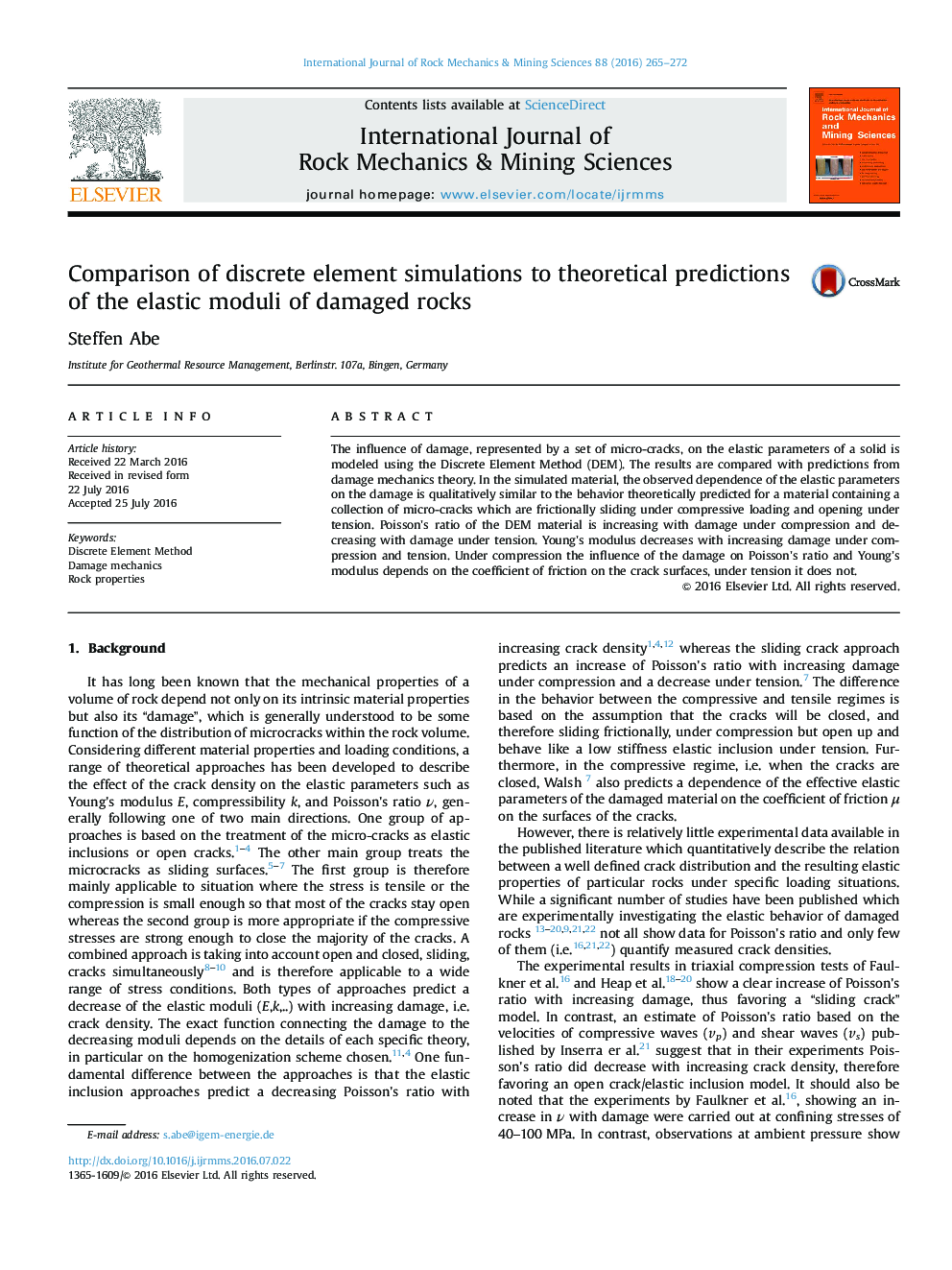| Article ID | Journal | Published Year | Pages | File Type |
|---|---|---|---|---|
| 808926 | International Journal of Rock Mechanics and Mining Sciences | 2016 | 8 Pages |
•Discrete Element Method simulations to study elastic properties of damaged rocks.•Comparison with damage mechanics theories.•Numerical model captures most trends of damage-elasticity relation for a large set of stress conditions.•Some unexplained differences remain.•Results suggest need for further studies.
The influence of damage, represented by a set of micro-cracks, on the elastic parameters of a solid is modeled using the Discrete Element Method (DEM). The results are compared with predictions from damage mechanics theory. In the simulated material, the observed dependence of the elastic parameters on the damage is qualitatively similar to the behavior theoretically predicted for a material containing a collection of micro-cracks which are frictionally sliding under compressive loading and opening under tension. Poisson's ratio of the DEM material is increasing with damage under compression and decreasing with damage under tension. Young's modulus decreases with increasing damage under compression and tension. Under compression the influence of the damage on Poisson's ratio and Young's modulus depends on the coefficient of friction on the crack surfaces, under tension it does not.
